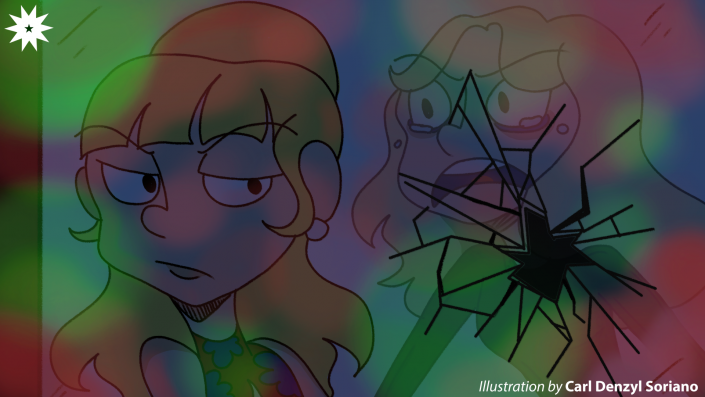When Last Night in Soho first beckoned for viewers to go downtown, it was a pretty package. Who could say no to a stylistic thriller helmed by Edgar Wright of Baby Driver with a talented cast headed by ingenue Anya Taylor-Joy?
Undoubtedly, it’s easy to get sucked in by the glitz and glamor as starry-eyed London newcomer Thomasin Mckenzie’s Eloise does. The film’s premise of a time-warping, genre-bending mystery is alluring, and when Eloise ultimately starts to be disillusioned with her neon-lit 1960s fever dream, the dread seeps in, too.
In more ways than one, not all that glitters is gold in Last Night in Soho. Beyond the carefully orchestrated visuals and lush sets, the film’s message quickly becomes muddled. After all, when style takes precedence over substance, the thrill fades faster than you can say “showtime”.

Starstruck
Much of the film’s meaning is conveyed through the use of mirrors and how it belies the characters’ dreams, insecurities, and eventually, trauma. Most notably, it reflects the exploitative gaze that defines much of Taylor-Joy’s Sandie Collins’ tragic arc.
Taylor-Joy stuns as the enigmatic Sandie who is framed with beauty and male desire onscreen. While Sandie spends the bulk of the film grasping for stardom and eventually being abused by the same industry, Eloise’s connection with her is one that is rooted in kinship and goodness. The stark contrast between this imagery of how men see Sandie and how Eloise sees Sandie is the convincing crux of the film.
The strong performances of the two leads are flanked by a solid supporting cast that includes Matt Smith, Diana Rigg, and Michael Ajao. However, they seem to be woefully underutilized at times—causing the film’s themes to miss the mark.
(There’s) always something there to remind me
Wright effectively captures the attention of today’s nostalgic generation with its reintroduction of the sensual and thrilling giallo films. Notably, its blast-from-the-past style is a fresh approach to the old Italian genre. It’s odd, thrilling, yet provides a hunger for what’s next.
Certainly, it quenches the thirst for the feeling of being young, robust, and hip—a fever dream nobody wishes to wake up from. Passing through the turbulent yet vivid Soho nightlife to look for a club to jive to The Kinks, hips swinging in a flowy dress, and shimmying under the intoxication heating up the throat is portrayed as pure fantasy.
While it seizes its fun-loving hedonism, Wright stays true to the film’s mystery, as Sandie and Eloise’s intertwined tragedy provides a sense of discomfort and longing for answers.
Puppet on a string
While Last Night In Soho exhibited a palpable message of female empowerment, it failed to satisfy the “good for her” narrative. To begin with, the film relies on the overused trope of pitting women against each other as cheap plot fuel. Furthermore, instead of effectively using the horror that comes with being the subject of unwanted sexualization—especially in the 60s—the chronic use of sexual harassment in the movie was nothing but repetitive.
The movie’s message about mental health is also a huge red flag. The story heavily implies that Eloise inherited her late mother’s mental health struggles, with her often disassociating from reality and dreaming of Sandie. Unfortunately, the film’s treatment of its female characters sends the message that sexual abuse survivors will either go crazy or die. Ultimately, there is an absence of a clear resolve regarding her mental health other than being a convenient element—bland at best and insensitive at worst.
Last Night in Soho started strikingly, only to lose its twinkle in the end. It seems that much attention was directed to its exceptional cast and groovy visuals, forgetting the need for a dense resolution to an issue that has often been wrongly told by the media. The film could have been a powerful portrait of female rage, healing, and justice, but it ended up serving a schlocky plot twist.
Packaged to be dessert for the eyes, Last Night In Soho is a meager picture-perfect cautionary tale for those who say they were born in the wrong generation. It’s safe to say that it is an interesting addition to Edgar Wright’s roster, yet no amount of neon-lit cinematography can prevent its star from fading.
